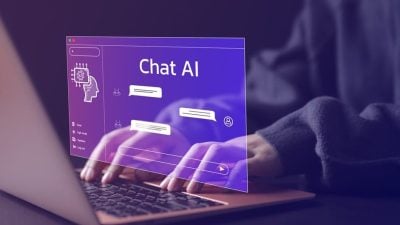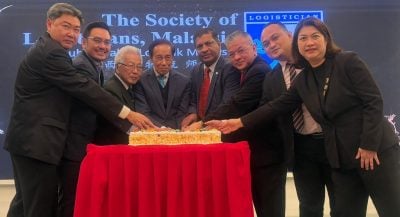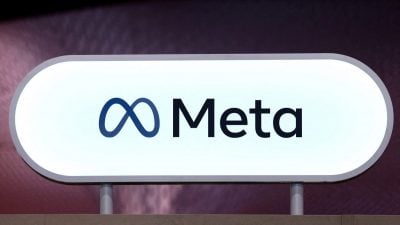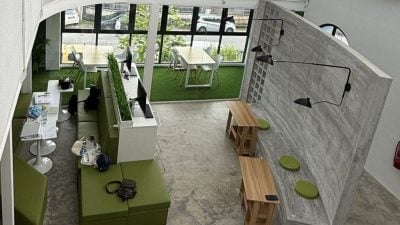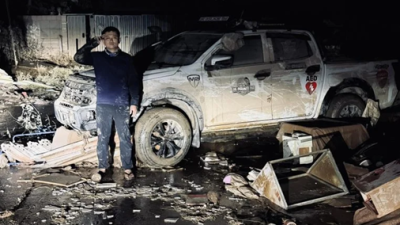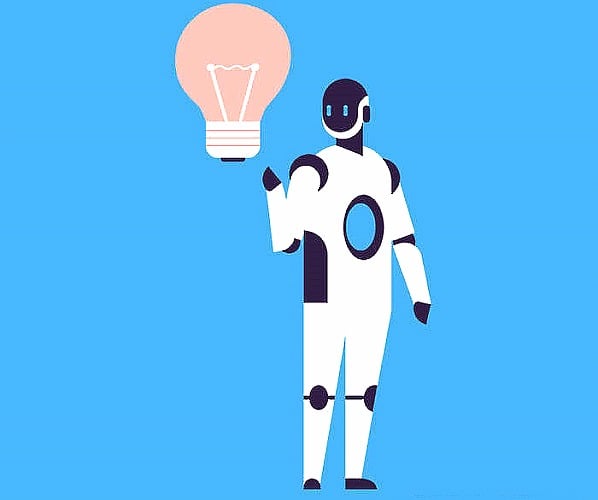
When OpenAI introduced ChatGPT, the excitement was evident. People familiar with the tech world knew that large language models were being developed, but everyone was looking forward to a leader.
OpenAI took the lead, making other major companies like Google follow with their own version, called Bard.
In a demonstration, Bard was asked, “What new discoveries from the JWST can I tell my 9-year-old about?” Bard confidently responded: “JWST took the very first pictures of a planet outside our own solar system.”
Seems correct, right? But if Bard read our column in Sin Chew Daily, it would know that’s not accurate. While the Webb Telescope is great at studying distant planets, the first photo of a planet outside our system was taken 20 years ago.
About two decades earlier, “Adaptive Optics” changed the way we look at the sky, especially with large 8-10 meter telescopes. This technology adjusted telescope lenses to remove atmospheric blur, letting us see distant planets for the first time.
Bard’s mistake did not go unnoticed. Investors became cautious, and Google’s stock value dropped, causing a huge loss — hundreds of billions — from its market cap.
Understanding how large language models learn
Why did Bard make such an error? To understand this, we need to look at how these large models are trained.
The main difference between machine learning and traditional programming is the method: we’ve gone from controlling every step to letting computers find patterns in the seas of data.
So, how do machines learn language patterns? In a way, machine learning’s method is similar to the fill-in-the-gap exercises we did in school.
Think of reading lots of online text, removing some words, and then trying to put them back. For example, “(Who) was the tenth prime minister of Malaysia” or “(What) is a popular Malaysian snack.”
The model has to figure out the missing words. Sometimes, more than one answer could work, so the model has to decide the best answer and how sure it is.
Though it sounds simple, this way of learning is effective. It’s like how we learned in school: language taught us grammar, history gave us facts, and math honed our logical thinking.
These large computer models learn by going through a ton of data, similar to intense practice exams.
For comparison, large language models can be likened to slot machines in the Genting Highlands casino: each attempt can yield varied results. By giving them a lot of data to learn from, we’re trying to “rig” the system, making sure they produce useful and accurate results more often.
More than just ChatGPT: The world of open-source AI tools
Understanding Bard’s mistake is easier when you look at the bigger picture.
The James Webb Space Telescope is known for its incredible work on distant planets as well as its cutting-edge imaging technology. But the combination of both can be misleading. It is as if someone asks you for a Malaysian delicacy, and you suggest a strange food combo: “Roti Canai with Durian and Laksa.”
Though current AI can make simple errors, there’s more to these tools than just ChatGPT’s functions. ChatGPT is only one of many large AI language models available.
Even if the latest model in OpenAI is not publicly available, other models like Meta’s LLaMa series are available to everyone. These open-source tools allow us to change and improve these models, discovering new uses.
Fine-tuning these models is akin to putting students through advanced studies. Imagine you have a group of top college students.
They might not be experts in specialized fields like advanced astrophysics, but with some extra training, they can become valuable resources. Our team is focusing on this idea.
Improving AI with 30 years of astronomy knowledge
We recently started a project where we trained open-source AI models with around 300,000 articles from astronomy journals over 30 years.
Our training used similar fill-in-the-gap and word-chain exercises I mentioned earlier, but we added a “dueling models” strategy.
Here, one AI model would try to solve astronomy problems, while another model would check and criticize those answers. This back-and-forth boosted their learning. (We’ll skip the technical stuff.)
At first, we were just experimenting. But the results amazed us. We used AI to suggest topics for Ph.D. astronomy theses and had experts review them.
The feedback was clear: the AI’s ideas were sometimes rated even better than those from actual students in astrophysics. Some friends even joke, “You have to stop this or we’ll lose our jobs.”
We want to clarify that we’re not trying to replace astronomers. But in today’s AI-driven world, machine-created answers are often seen as the baseline. Only the really unique human ideas are considered valuable.
This might be hard to accept, but there’s a bright side: AI is raising the standard for everyone. People still have their own special talents that often outdo these computer models. But these tools can help fill in gaps in our skills.
For example, I’m proud of my research, but writing technical papers in English was always hard for me, especially since it’s not my first language. While I don’t expect these AI models to write like Dickens or Wilde, they’ve helped me feel more comfortable and confident in my writing.
AI: Leading the way for fairness and equality
Looking at the bigger picture, I’m hopeful. I believe that AI will help promote fairness and open doors for communities that have been left out.
In the past, we often used measures like how often a research paper was cited to judge a researcher’s contribution. But honestly, this system isn’t always fair. Sometimes average papers get a lot of attention, while other important ones don’t get noticed.
These traditional measures can’t always capture a researcher’s true value. That’s why our team is using our advanced AI models to review academic papers without any biases.
Our goal? To highlight the real game-changers in research.
Looking ahead, AI can make technology more accessible to everyone. For example, consider astrophysics, which usually requires a lot of funding.
Many talented individuals might be held back because they don’t have the right resources or connections. But powerful AI tools can change this. They can be just as good as experts in many fields.
These tools can be a huge help, especially for those who might otherwise be left out. This idea drives our research, and we’re committed to making all our AI-generated astrophysics research topics publicly accessible online.
Learning from IBM’s Deep Blue: A new beginning, not an end
Some people worry that AI could lead to a bleak future. But we should remember that similar concerns have been raised before, and they didn’t come true.
Remember when IBM’s powerful computer, Deep Blue, beat chess champion Garry Kasparov? Many then thought it was the end of chess.
But more than 20 years later, chess is more popular than ever. And AI has played a part in this. Players everywhere, from big cities to small villages, are improving their game with the help of AI tools. As a result, countries that weren’t known for chess are now competing at high levels.
So, rather than seeing AI as a threat, we should see it as an opportunity. It’s a chance for us to grow, learn, and reach new heights.
Read also:
- AI, ChatGPT, and my mom’s Roomba
- On AI and the soul-stirring char siu rice
- Redefining education in the AI era: the rise of the generalists
- AI in astronomy: Promise and the path forward
- Unpacking AI: Where opportunity meets responsibility
(Yuan-Sen Ting graduated from Chong Hwa Independent High School in Kuala Lumpur before earning his degree from Harvard University in 2017. Subsequently, he was honored with a Hubble Fellowship from NASA in 2019, allowing him to pursue post-doctoral research at the Institute for Advanced Study in Princeton. Currently, he serves as an associate professor at the Australian National University, splitting his time between the School of Computing and the Research School of Astrophysics and Astronomy. His primary focus is on utilizing advanced machine learning techniques for statistical inference in the realm of astronomical big data.)
ADVERTISEMENT
ADVERTISEMENT






